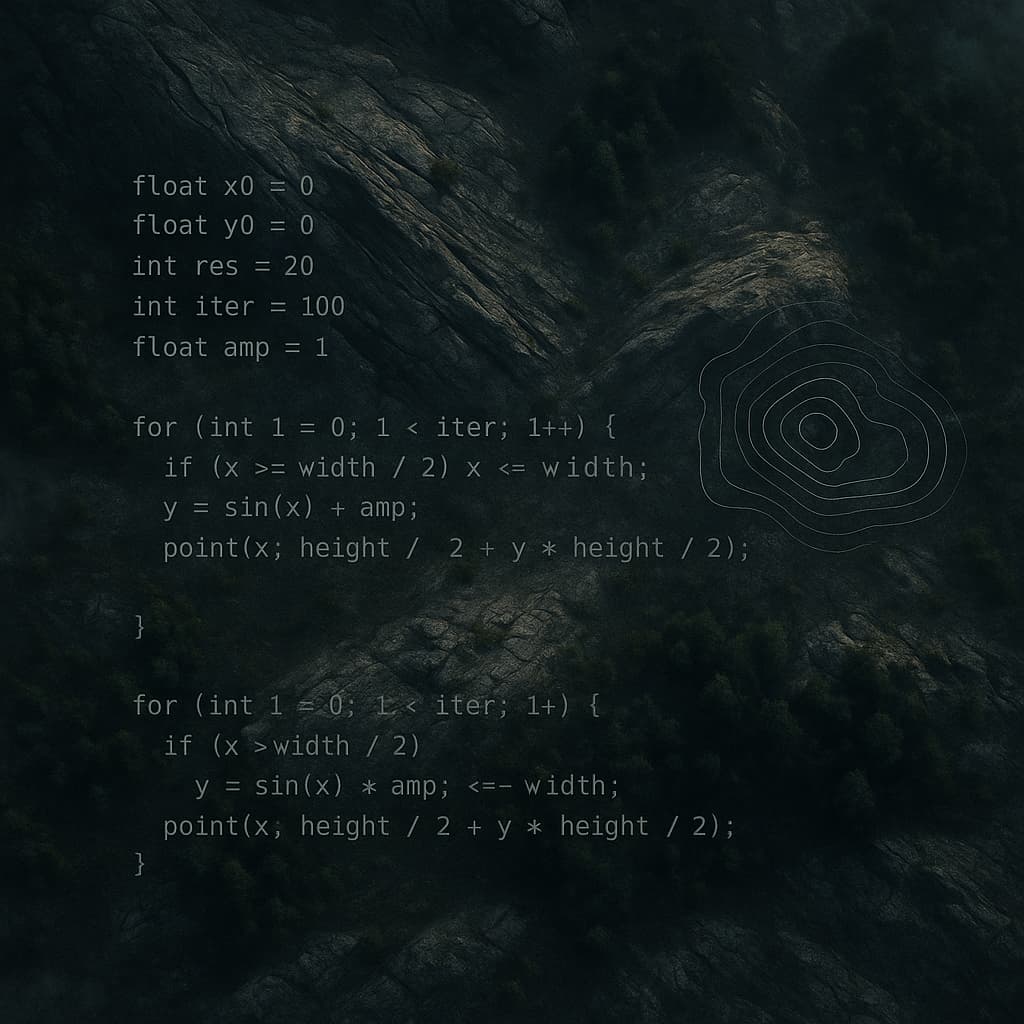
From Code to Matter: Generative Design for 3D-Printed Vases and Lamps
Condividere
FROM CODE TO MATTER: GENERATIVE DESIGN FOR 3D-PRINTED VASES AND LAMPS
At GENERAFORMA, design isn’t drawn—it grows. Through generative algorithms and 3D printing in PLA, we translate the logic of nature into objects for the home: vases and lamps that pair texture, shadow, and light. This guide explains what generative design is, how code becomes matter, how to care for PLA in daily use, and how to style pieces with dried and wild botanicals.
What Generative Design Is — And Why We Call It Growth
Generative design doesn’t sketch a single shape. It defines a system—rules, constraints, and goals—that can generate a family of forms. In our practice, that system behaves like a seed: the algorithm holds the instructions, the 3D print translates them into matter, and the person living with the object completes the cycle by composing with dried botanicals.
Rather than imitating nature, we aim to speak its language: variation, balance, and layered morphologies—strata, profiles, folds—that respond beautifully to light.
From Code to Matter: 3D Printing in PLA
We materialise algorithms with additive manufacturing in PLA, a plant-based polymer. In home settings PLA is durable when used properly.
Care Principles
-
Heat: keep away from radiators and hot bulbs; lamps use LED only.
-
Water: our vases are designed for dried botanicals. For fresh stems, add a glass or ceramic insert.
-
Light: avoid prolonged, direct sun to preserve hue and surface quality.
-
Cleaning: soft cloth; lukewarm water with mild soap; no harsh solvents.
Case Studies: PROFILUM and CARSIA (Vases)
PROFILUM (vase) — landscape-like profiles; ridges catch side light and draw graphic shadows. Designed for dried and wild botanicals.
CARSIA — a surface inspired by karst morphologies: smooth, stratified, with voids that cradle stems. Delivered in recyclable packaging.
Styling Tips for Vases
-
PROFILUM shines near a window with lateral light.
-
CARSIA pairs well with grasses and airy umbels; mix heights and leave breathing space for light.
Case Studies: PROFILUM LAMP and DUNALIA (Lighting)
PROFILUM LAMP — a warm LED disk rests on folded walls that can hold dried stems; light becomes a stage for botanical silhouettes.
DUNALIA — dune-inspired surface for soft, enveloping diffusion, ideal for intimate atmospheres.
LED-Only Note
Use LED light sources (around 2700 K for a warm tone) to minimise heat and protect geometry and finish.
Sustainability, Care & Longevity
-
Durability: stable in domestic settings when protected from heat, direct sun, and water.
-
Intended use: vases for dried botanicals; add an inner container for fresh stems.
-
Upkeep: gentle dusting; soft cloth; avoid solvents.
-
End of life: prioritise reuse and repair; follow local guidance for material recovery.
Styling Guide: Dried and Wild Botanicals
Selecting
Choose dry, intact stems—grasses, light seed heads, umbels. Avoid humidity.
Drying
Make small bundles and hang them upside down in a ventilated, shaded space. For leaves and petals, press between absorbent sheets for flat silhouettes.
Composing
Contrast fine stems with fuller seed heads; vary heights and directions; keep negative space so light can travel.
Upkeep
Keep away from moisture and steam; dust with a soft brush.
Buying Checklist
-
Space: shelf, console, bedside, or suspension.
-
Vase (PROFILUM / CARSIA): slim footprint for ledges and shelves.
-
Lamp (PROFILUM LAMP / DUNALIA): light plus botanical scenography.
-
-
Shadow play: if you want strong, graphic shadows, choose surfaces with dense ridges (PROFILUM, PROFILUM LAMP).
-
Maintenance: dried botanicals are low-maintenance.
-
Material: bio-based PLA; LED only; protect from heat and direct sun.
FAQ
Is PLA biodegradable at home?
Treat it as a durable material in domestic use; industrial composting does not equal home compost.
Can I use fresh flowers?
Yes—with a sealed insert in glass or ceramic. Our vases are optimised for dried botanicals.
Which bulbs should I use with your lamps?
LED only, ideally warm light around 2700 K.
Why avoid heat and direct sun?
To protect colour, geometry, and surface texture over time.
How do I clean the surfaces?
Use a soft cloth or lukewarm water with mild soap; avoid harsh solvents.
Is 3D-printed design just a trend?
3D printing is now a stable part of contemporary interior and lighting design.
Call to Action
Explore the Vases and Lighting collections, and get in touch for projects or trade requests.
